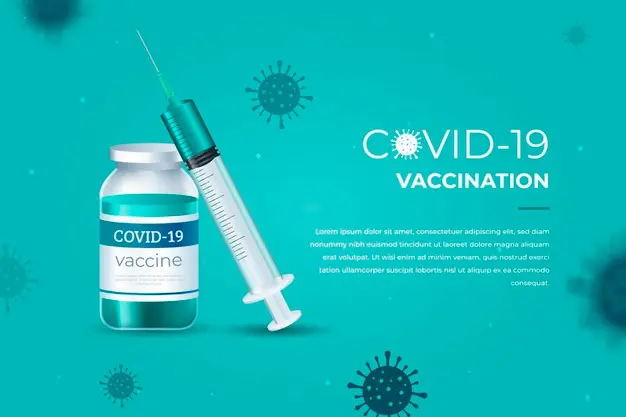Vaccination Schedule – As a parent, you want to do everything possible to protect your child and keep them safe and healthy. Vaccines are a critical tool for accomplishing this. They help protect your child from a variety of dangerous and preventable diseases. Continue reading to learn why immunizations are important, get the most up-to-date childhood immunization schedule, and learn about the most common childhood diseases and the life-saving vaccines that have been developed to combat them.
What Are Vaccinations and Why Do Your Baby Require Them?
A vaccine is a medical treatment that is used to prevent certain diseases. These are infections-caused diseases that spread from person to person. Vaccines contain weakened versions of the infection or versions that look similar to it. A majority of vaccines are given in childhood (VACCINATION FOR KIDS). Childhood vaccines assist your child’s body in developing immunity to the disease if and when they are exposed to it. Vaccines are critical. They not only keep your child healthy, but they also help all children by limiting the spread of disease and, in some cases, eliminating serious childhood diseases.
READ - Guidelines for COVID-19 Vaccination of Children Aged 15 – 18 Years
Vaccines and the Diseases They Protect Against
| Vaccine | Disease | Symptoms |
| BCG | Tuberculosis | Tuberculosis (TB) is an infection that primarily affects the lungs, but can also affect other organs such as the brain in infants and young children. A severe case may result in serious complications or death. When contracted, tuberculosis is extremely difficult to treat, and treatment is time-consuming and not always successful. |
| Hep B | Hepatitis B | Hepatitis B virus is a dangerous liver infection that often goes undetected in infants for decades. Later in life, it may progress to cirrhosis and liver cancer. |
| Polio | Poliovirus | Polio is a virus that paralyses one out of every 200 people infected. When their breathing muscles are paralysed, 5–10% of those affected die. Once paralysis sets in, there is no cure for polio – only treatment to alleviate the symptoms. |
| DTP | Diphtheria | Diphtheria infects the throat and tonsils, making breathing and swallowing difficult for children. Severe cases can damage the heart, kidneys, and/or nerves. |
| DTP | Tetanus | Tetanus causes excruciating muscle contractions. It can cause the muscles in children’s neck and jaw to lock (lockjaw), making it difficult for them to open their mouth, swallow (breastfeed), or breathe. Tetanus is often fatal even with treatment. |
| DTP | Pertussis | Coughing spells caused by pertussis (whooping cough) can last for weeks. In some cases, it can result in difficulty breathing, pneumonia, and death. |
| Hib | Haemophilus influenza type b (Hib) | Hib is a bacterium that causes pneumonia, meningitis, and other severe infections in children under the age of five. |
| Pneumococcal | Pneumococcal diseases | Pneumococcal diseases range in severity from meningitis and pneumonia to milder but more common infections like sinusitis and ear infections. Pneumococcal diseases are a leading cause of illness and death worldwide, especially among young children under the age of two. |
| Rotavirus | Rotavirus | Rotaviruses cause severe diarrhoea and vomiting in young children, which can lead to dehydration, electrolyte imbalance, and shock. If treatment, particularly fluid replacement, is not initiated immediately, this can result in death. |
| MMR | Measles | Measles is a highly contagious disease that causes fever, runny nose, white spots in the back of the mouth, and a rash. Severe cases can result in blindness, brain swelling, and death. |
| MMR | Mumps | Mumps symptoms include headache, malaise, fever, and swollen salivary glands. Meningitis, swollen testicles, and deafness are all possible complications. |
| MMR | Rubella | Rubella infection is usually mild in children and adults, but it can cause miscarriage, stillbirth, infant death, or birth defects in pregnant women. |
| HPV | Human papillomavirus (HPV) | HPV usually causes no symptoms, but some strains can cause cervical cancer, which is the fourth most common cancer in women. Almost all cases of cervical cancer (99%) are caused by HPV. HPV can also cause genital warts in both men and women, as well as cancer in other parts of the body. |
Vaccination Schedule
| Age | Vaccine |
| Birth | BCG, Hep B1, OPV |
| 6 weeks | DTwP /DTaP1, Hib-1, IPV-1, Hep B2, PCV 1,Rota-1 |
| 10 weeks | DTwP /DTaP2, PCV 2, Hib-2, Hep B3, IPV-2, Rota-2 |
| 14 Weeks | DTwP /DTaP3, PCV 3, IPV-3, Hib-3, Hep B4, Rota-3* |
| 6 Months | Influenza-1 |
| 7 Months | Influenza -2 |
| 6 – 9 Months | Typhoid Conjugate Vaccine |
| 9 Months | MMR 1 (Mumps, measles, Rubella) |
| 12 Months | Hepatitis A- 1 |
| 12 – 15 Months | PCV Booster |
| 15 Months | MMR 2, Varicella |
| 16 – 18 Months | DTwP /DTaP, Hib, IPV |
| 18 – 19 Months | Hepatitis A- 2**, Varicella 2 |
| 4 – 6 years | DTwP /DTaP, IPV, MMR 3 |
| 9 – 15years (Girls) | HPV (2 doses) |
| 10 – 12 Years | Tdap/ Td |
| 2nd, 3rd, 4th and 5th Year | Annual Influenza Vaccine |
It is critical that all of your child’s recommended vaccinations schedule are administered at the appropriate stage of your doctor-approved vaccination schedule. Although the timing of each child’s vaccination shot varies depending on age and location, our medical team at Apollo Cradle will keep you up to date on each immunization that is due. If you have any questions about infant vaccinations, please contact the medical team at Apollo Cradle or you could visit a child specialist in Hyderabad, Bangalore, Delhi, or Mumbai.



